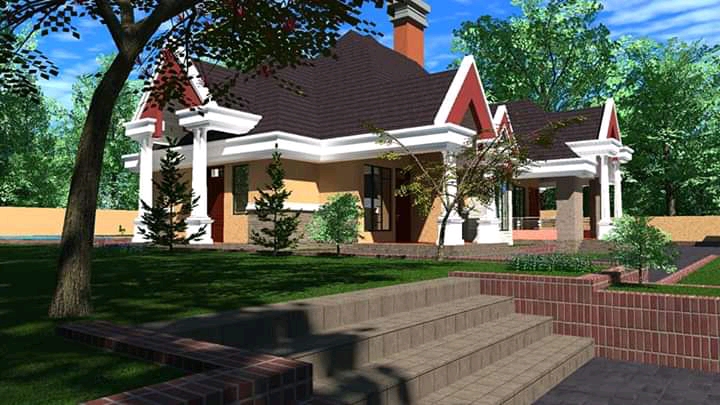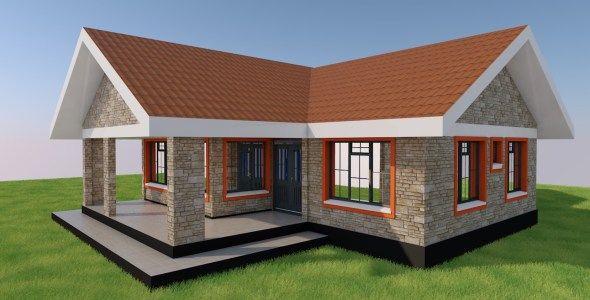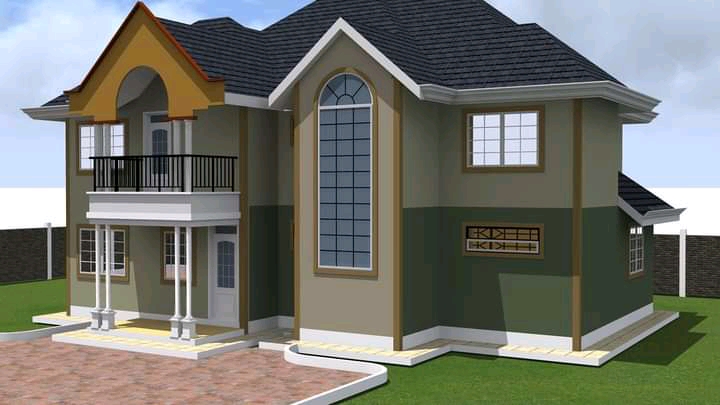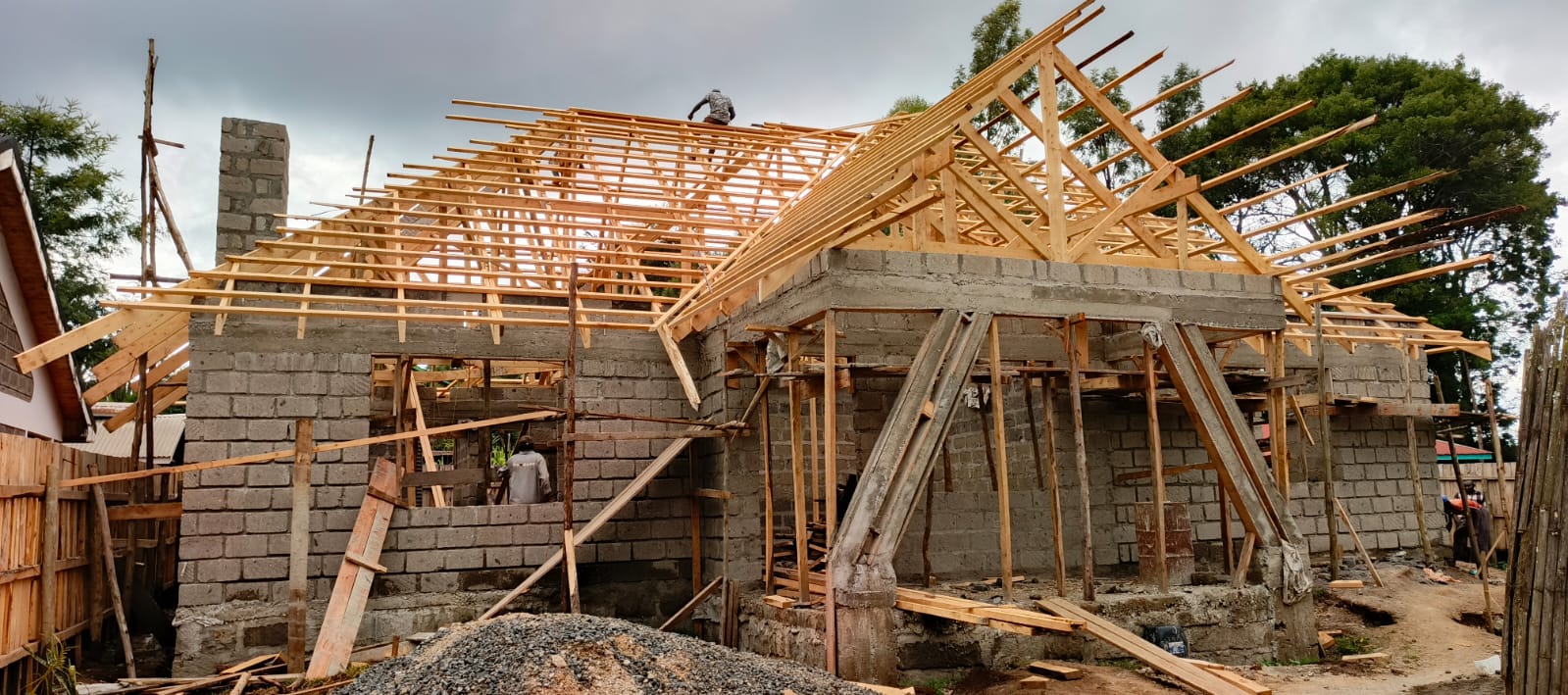When it comes to building a house or selecting a home design, the choice between modern and traditional styles is an important consideration. Whether you’re working within a tight budget or aiming for a more cost-effective construction process, both modern and traditional designs offer unique advantages that can cater to various preferences and financial constraints.
In Kenya, where the real estate market is growing rapidly and homeownership is a common aspiration, finding affordable yet functional home designs is key to achieving the dream of homeownership. This article explores budget-friendly ideas for building your dream home, with a focus on modern versus traditional designs. We’ll weigh the benefits of each, examine cost-effective strategies, and provide tips on how to choose the best design for your specific needs.
The Need for Budget-Friendly Home Designs
As land prices rise, construction costs increase, and lifestyle changes evolve, more Kenyan families and homeowners are looking for ways to build their homes without breaking the bank. While there are endless possibilities in terms of design and materials, it’s essential to find a solution that balances affordability with functionality and style.
When working with a limited budget, focusing on simple, efficient designs can significantly reduce overall costs. The key to budget-friendly home construction lies in making smart choices about layout, materials, and energy efficiency, as well as determining what elements are necessary to meet your living needs.
Both modern and traditional designs can be tailored to fit a variety of budgets, but each has its own unique considerations and benefits. Understanding the difference between the two will help you decide which one best suits your vision and financial plan.

Modern Home Designs: Cost-Effective Innovation
Modern house designs often embrace minimalism, sleek lines, and functional layouts that focus on efficiency and space utilization. These homes are typically designed to maximize natural light, incorporate sustainable features, and offer streamlined aesthetics that make use of innovative, cost-effective materials.
Key Features of Modern Designs:
- Open-Plan Layouts: Modern homes often utilize open-plan layouts, combining the kitchen, dining, and living areas. This reduces the need for internal walls, increasing the sense of space while saving on construction costs. Open layouts can also make smaller homes feel larger and more inviting.
- Energy Efficiency: Modern homes are frequently designed with sustainability in mind. For budget-conscious homeowners, this means incorporating energy-efficient features like solar panels, LED lighting, and high-performance insulation. These elements may require higher upfront costs but can save you money in the long run by reducing utility bills.
- Use of Affordable, Modern Materials: The modern design aesthetic favors clean lines and simple finishes, which can often be achieved with budget-friendly materials such as concrete, polished cement floors, glass windows, and steel frames. By opting for materials that are locally available and require minimal maintenance, you can further cut down on the cost of construction.
- Compact Designs: Many modern homes feature smaller footprints with multi-functional rooms. For example, a home office might double as a guest room, or the living space might blend with the dining area. Compact homes reduce overall construction costs and maximize the available land space, making them ideal for smaller plots.
- Minimalist Aesthetic: The minimalist design approach can be budget-friendly, as it avoids intricate details and decorative finishes that are common in traditional homes. The focus is on simplicity, which reduces both material costs and construction labor time.
Cost-Saving Ideas for Modern Homes:
- Use prefabricated materials to save on labor and material costs.
- Embrace natural light by designing homes with large windows and strategically placed skylights, reducing the need for artificial lighting during the day.
- Choose energy-efficient appliances and fixtures that will reduce long-term utility costs.
Traditional Home Designs: Timeless, Yet Affordable
Traditional homes in Kenya are often influenced by local cultures, craftsmanship, and available materials. These homes can range from simple, rural designs to more elaborate urban structures that incorporate decorative elements. While traditional homes may appear more complex in their design, they offer several ways to reduce costs through the use of locally available materials and labor.

Key Features of Traditional Designs:
- Local Materials: Traditional homes tend to make use of locally sourced materials such as stone, timber, clay bricks, and thatched roofs. Using materials that are abundant in the local area significantly reduces transportation and sourcing costs. Moreover, these materials often have a longer lifespan when properly maintained.
- Natural Ventilation and Cooling: Traditional Kenyan homes are often designed with climate in mind. High ceilings, wide eaves, and large windows allow for natural cooling and ventilation, reducing the need for air conditioning. For families on a budget, this can help lower utility costs and enhance the comfort of the home.
- Cultural and Functional Designs: Traditional designs are often rooted in the cultural context of the area, with specific layouts or rooms designed for communal living. Large verandas, courtyards, and multi-functional spaces are common in traditional homes, providing ample room for family gatherings, relaxation, and entertaining guests.
- Durability and Longevity: Many traditional homes, especially those built with local stone or timber, have a high level of durability. These homes are built to withstand the climate and environment, meaning they require less frequent repairs compared to homes built with modern, less durable materials.
- Craftsmanship and Detail: Traditional houses often feature unique craftsmanship and cultural motifs, such as carved wooden doors or intricate wall designs. While these details can add character, they may come at a higher cost if specialized artisans are required. However, simple craftsmanship can still be incorporated to reduce costs while preserving the traditional charm.
Cost-Saving Ideas for Traditional Homes:
- Use local stone or clay to reduce material costs. These materials are readily available and do not require long-distance transportation.
- Build a smaller footprint and focus on functional, multi-purpose spaces rather than expansive, unused rooms.
- Focus on simple finishes to avoid high costs associated with intricate designs and details.
Modern vs Traditional: Choosing the Best Design for Your Budget
Both modern and traditional house designs offer distinct advantages, depending on your personal preferences and budget. Here’s how to choose the best design for your needs:
- Budget Considerations:
- If your priority is to reduce upfront costs, traditional homes may offer more immediate savings. By using local materials and simple designs, traditional homes can be more affordable to build, especially if you’re in a rural area where materials like stone and timber are abundant.
- On the other hand, modern designs might require a higher initial investment in terms of materials and construction but can save money in the long run due to energy efficiency and reduced maintenance costs.
- Space and Functionality:
- If you value open, multifunctional spaces, modern designs are typically more suited to your needs. They focus on simplicity and maximize the utility of every square meter.
- For those who prefer communal living spaces, traditional designs may appeal more, offering larger verandas, courtyards, and separate rooms for various purposes.
- Maintenance and Durability:
- Traditional homes often have natural durability due to the use of indigenous materials, and they are built to handle the specific climate of the region. These homes may require less maintenance compared to modern homes, which might need regular updates to maintain their appearance and function.
- Modern homes are typically low-maintenance, especially when designed with minimal finishes, energy-efficient features, and durable materials.
- Energy Efficiency and Sustainability:
- For homeowners concerned about long-term utility bills, modern homes are more likely to incorporate energy-saving features such as solar panels, rainwater harvesting, and superior insulation. These designs can reduce monthly energy consumption, saving money over time.
- Traditional homes, especially those in rural settings, are built with natural ventilation and passive cooling systems, which may also reduce reliance on artificial air conditioning.

Conclusion
Choosing between modern and traditional home designs ultimately comes down to your specific needs, budget, and lifestyle. Modern designs offer a sleek, minimalist aesthetic with energy-efficient features that can lower long-term costs, while traditional designs provide a more timeless, cultural charm with a focus on using local materials and craftsmanship.
For those working with a tight budget, a traditional design may offer the most immediate savings, while a modern design, though possibly higher in initial costs, could provide significant savings in terms of energy efficiency and reduced maintenance. Ultimately, both options can be tailored to meet your budget, ensuring that you can build the home of your dreams, whether modern or traditional.
By making informed choices and striking a balance between functionality, aesthetics, and cost, you can create a home that’s both budget-friendly and comfortable for years to come.
Reference Products:
5-Bedroom Bungalow House Design in Kenya
4-Bedroom Maisonette House Design in Kenya with DSQ
4-Bedroom Bungalow House Design in Kenya
3-Bedroom Bungalow House Design in Kenya
Modern Comfort – Simple 5BR Maisonette Building Plan in Kenya with Home Office and Laundry WKRE068
Timeless Elegance – Simple 4BR Maisonette Building Plan in Kenya WKRE067
Elevated Living – Simple 4BR Maisonette House Drawings with Attic Roof in Kenya WKRE066
simple 4-bedroom maisonette house drawings in Kenya WKRE065
simple 2-bedroom round house drawings in Kenya WKRE064
Mabati Rental Innovation – Simple and Affordable Temporary Rental Drawings in Kenya WKRE063
Simple 5-bedroom bungalow building plans in Kenya WKRE061
Elevated Living – Simple 3BR Maisonette House Designs with Multiple Balconies in Kenya WKRE060
4 Bedroom Bungalow Building Plans WKRE053
4 Bedroom Maisonette Building Plans WKRE052
Related posts:
Top House Designs in Kenya in 2024
How to Choose the Perfect Two-Bedroom House Plan for Your Home in Kenya
Karen Nairobi:A Comprehensive Guide to Its Culture, Economy, Infrastructure, and Opportunities
Kilimani Nairobi: A Comprehensive Guide to Its Culture, Economy, Infrastructure, and Opportunities
What New Homeowners in Nairobi Like
The Best Real Estate Valuer in Kakamega: Your Trusted Partner in Property Valuation
Bungalow House Designs in Kenya: Modern Trends and Affordable Options
Cost of an Architect to Draw House Plans in Kenya
Best House Designs on 50×100 Plots in Kenya
Top 10 House Plans in Kenya for 2024
Interior Design Trends for Bungalow Houses
Welcome to Top-notch Land Survey Services in Busia
Affordable Housing in Kenya: Embracing Cheap House Designs
Exploring the Significance of 4-Bedroom House Designs in Kenya
The Ultimate Topnotch 4 Bedroom Bungalow House Plans in Kenya
What to Know Before Settling on House Designs in Kenya?
Real Estate Trends in Kendu Bay and Kadongo
Case Study: Successful Completion of 3 and 4 Bedroom Bungalows in Nairobi
Advantages and Disadvantages of 4-Bedroom Flat Roof House Plans in Kenya
4 Bedroom House Design in Kenya
What’s Next for The Construction Industry in Kenya?
Top 5 Construction Companies in Nairobi CBD
Mihango Nairobi: A Comprehensive Guide to Its Culture, Economy, Infrastructure, and Opportunities
Top 10 Affordable 3-Bedroom House Plans and Designs in Kenya: Ideas for Modern Bungalows
Why Investing in Apartment Buildings in Eastleigh, Nairobi, is a Lucrative Opportunity
Energy Efficiency In 4 Bedroom House Designs
The Trends in Residential Construction in Nairobi
Evolution of Four-Bedroom House Plans: A Look Through Time
Cost of Building a Three Bedroom House
Exploring Diverse House Designs in Kenya Context
Crafting the Perfect Apartment Floor Plan: A Comprehensive Guide
Revolutionizing Kenya’s Real Estate Industry: The Impact of Artificial Intelligence
Welcome to Premier Land Survey Services in Vihiga
A Guide to Choosing House Designs for Rural Kenya: Finding Simplicity and Affordability
House Plans for 4 Bedrooms Homes in Kenya[house plans in Kenya]
What to Know Before Settling on a Construction Company in Kenya
COST OF BUILDING A 1 BEDROOM HOUSE IN RURAL KENYA
Understanding the Cost of Building a 4-Bedroom Maisonette in Kenya
Factors To Consider When Choosing a Construction Company in Kenya
House Designs in Kenya: Trends and Options for Every Budget
Ruiru Kiambu: A Comprehensive Guide to Its Culture, Economy, Infrastructure, and Opportunities
What Is Passive Real Estate Investing And How Does It Work?
Enhancing Real Estate Investment: The Role of Property Management Services in Kenya
Exploring the Best Apartment Designs on 50×100 Plots in Kenya
Affordable House Designs in Kenya: Paving the Path to Home ownership
Exploring the Evolving Trends in Four-Bedroom House Plans: A Focus on Kenya
Inspiring 4 Bedroom House Designs in Kenya: Your Next Build Awaits
CUSTOMIZABLE HOUSE PLANS FOR KENYAN FAMILIES
Cost Of Building A 1 Bedroom House in Rural Kenya
Affordable House Designs in Kenya
Comprehensive Construction Services in Kenya
Kitengela Kajiado: A Comprehensive Guide to Its Culture, Economy, Infrastructure, and Opportunities
Choka Nairobi: A Comprehensive Guide to Its Culture, Economy, Infrastructure, and Opportunities
Muthaiga Nairobi: A Comprehensive Guide to Its Culture, Economy, Infrastructure, and Opportunities
Why the Design and Build Concept is Ideal for Private Developers
Why First-Time Homeowners Love 3-Bedroom House Plans
The Complete Guide to the Cost of Building a 3-Bedroom House in Rural Kenya
Importance Of Hiring a Trusted Construction Company In Kenya
Kasarani Nairobi: A Comprehensive Guide to Its Culture, Economy, Infrastructure, and Opportunities
Guide to Apartment Construction in Nairobi: From Planning to Completion
The Cost of Construction Documents in Kenya: A Comprehensive Guide
Architectural Designs in Kenya: Transforming Spaces with PrimeDrawings
How Much Does It Cost to Hire An Architect in Kenya For Your Entire Project Design?




